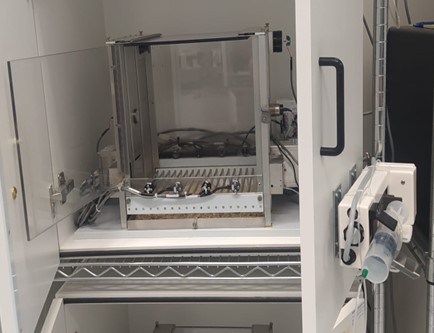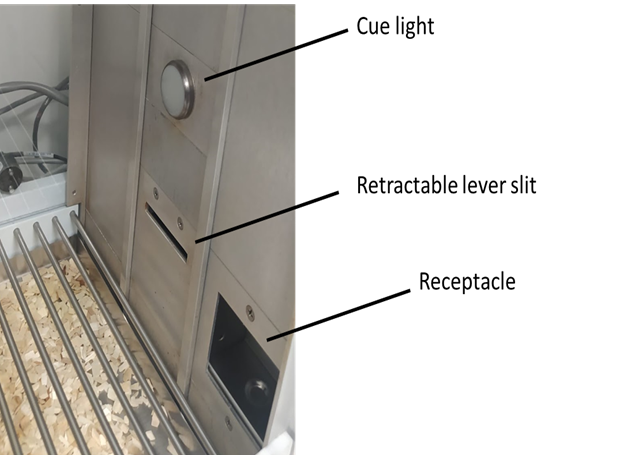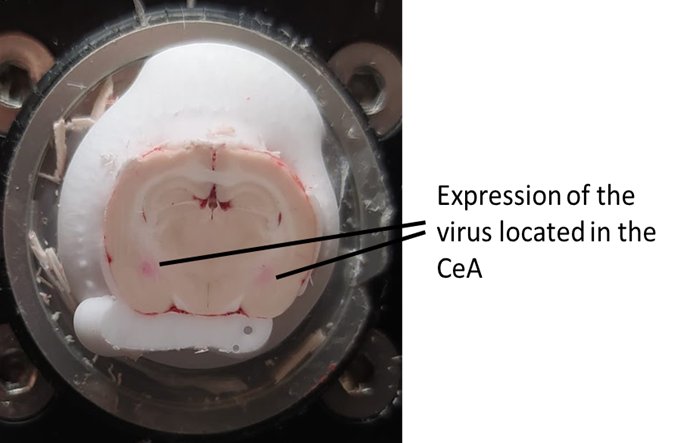In this experiment, the first step was to build an animal model to mimick compulsivity (an essential factor of Alcohol Use Disorder).
Behavioural experiments
I trained rats to self-administer an alcoholic solution from a receptacle. The training sessions and the experiments were located in a training box.


When the cue light was on, the rats could press the lever and receive the reward from the receptacle.
After all the rats learned the task and started receiving high amounts of rewards, I introduced a negative consequence for this action (i.e. a foot-shock through the metal grid). The rats that kept pressing the lever numerous times despite the foot shock were classified as compulsive.
The real deal: decreasing EZH2 expression and deleting PKCδ+ neurons in the Central Amygdala
To assess the role of EZH2 and PKCδ+ neurons in this compulsive behaviour, I had to understand what would happen if these 2 factors were eliminated. To do this, I operated surgeries and injected in the Central Amugdala of the rats 2 virus vectors: The first one would decrease EZH2 expression (i.e. knock down), the second one would delete the PKCδ+ neurons. One group of rats received the first virus, a second group received the second. After a recovery period the punished self-administration of alcohol resumed to see if there were any differences in alcohol consumption from before.

To get to know what I found out from these experiments, please give a look at the Results!